-
Courses

Courses
Choosing a course is one of the most important decisions you'll ever make! View our courses and see what our students and lecturers have to say about the courses you are interested in at the links below.
-
University Life

University Life
Each year more than 4,000 choose University of Galway as their University of choice. Find out what life at University of Galway is all about here.
-
About University of Galway

About University of Galway
Since 1845, University of Galway has been sharing the highest quality teaching and research with Ireland and the world. Find out what makes our University so special – from our distinguished history to the latest news and campus developments.
-
Colleges & Schools
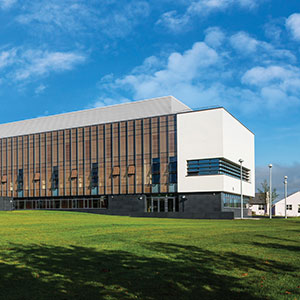
Colleges & Schools
University of Galway has earned international recognition as a research-led university with a commitment to top quality teaching across a range of key areas of expertise.
-
Research & Innovation

Research & Innovation
University of Galway’s vibrant research community take on some of the most pressing challenges of our times.
-
Business & Industry
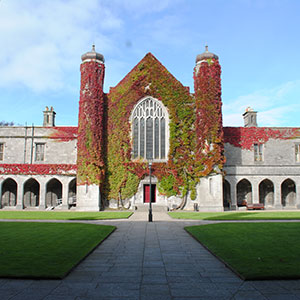
Guiding Breakthrough Research at University of Galway
We explore and facilitate commercial opportunities for the research community at University of Galway, as well as facilitating industry partnership.
-
Alumni & Friends
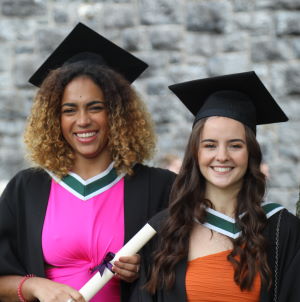
Alumni & Friends
There are 128,000 University of Galway alumni worldwide. Stay connected to your alumni community! Join our social networks and update your details online.
-
Community Engagement
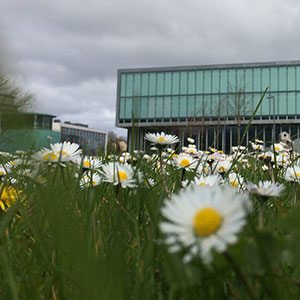
Community Engagement
At University of Galway, we believe that the best learning takes place when you apply what you learn in a real world context. That's why many of our courses include work placements or community projects.
Alumni
NBL Graduates.For postdoc alumni click here. |
|---|
Dr. Sarah Power, PhD. Physics, 1999-2002:
For more details of this work (pH sensing page).
|
Emma Murray-Hayden, MSc. Geology , 2000-04:
|
Dr. Milosz Przyjalgowski, Ph.D. Physics, 2000-05:
Thesis papers:
Other papers:
|
Suzanne Cawley, MSc. Physics, 2002-05:Suzanne researched the development of Quantitative Surface Enhanced Raman Scattering (QSERS) methods for the analysis of therapeutic agents and illicit narcotics. |
Jennifer Conroy, MSc. Chemistry, 2003-05:
|
Dr. Marie-Louise O'Connell, PhD. Chemistry, 2003-08:
The work was done in conjunction with Dr. Michael Madden's group in the IT department. The IT group have developed new machine learning methods to evaluate the data that Marie-Louise collects on both portable and laboratory based Raman systems. Marie-Louise was a graduate (Physics) of the Dublin Institute of Technology. Thesis papers:
|
Dr. Boguslaw Szczupak, PhD. Physics, 2000-09: Thesis papers:
|
Churn-Yee Chong, MSc Chemistry, 2006-09:
He is a graduate of the University of Strathclyde (M.Sc. Pharmaceutical analysis, 2006)., the University of Keele (Dip. Clin. Pharm.), and the School of Pharmacy, University of London (B.Sc. Pharm, 1998). |
Dr. Peter Owens, PhD Chemistry, 2006-10: Peter studied the photo-physics of fluorescence emission from crude petroleum oils and the development of fluorescence based methods for the analysis of hydrocarbon bearing fluid inclusions (HCFI). His project was funded by the SFI Research Frontiers Programme. Peter graduated in 2010 and now works in the Department of Anatomy in NUIG and his contact details can be found here. Peter studied the photo-physics of fluorescence emission from crude petroleum oils and the development of fluorescence based methods for the analysis of hydrocarbon bearing fluid inclusions (HCFI). His project was funded by the SFI Research Frontiers Programme. Peter graduated in 2010 and now works in the Department of Anatomy in NUIG and his contact details can be found here. Peter is a graduate of DIT (B.Sc. chemistry, 1991) and UCD (M.Sc. chemistry, 1994).
|
Dr. Richard Murray, PhD Chemistry, 2004-10:
Richard was a Physics graduate from NUI-Galway. He graduated in Oct. 2011 and then worked at CICbiomaGUNE in Spain. He is currently (Jan. 2021) the Research Project Manager at the Basque Centre for Biophysics. |
Dr. Cheryl Morris, PhD Chemistry, 2007-11:
Thesis Papers:
|
Dr. Domhnall O'Shaughnessy, PhD Chemistry, 2007-12: Domhnall studied Metal Enhanced Fluorescence (MEF), polymer dynamics using FCS, and the interaction of proteins with nanoparticles using FCS. He is a 2007 graduate of NUIG chemistry. Domhnall passed his viva on 13/06/2012 and graduated in November 2012. Domhnall studied Metal Enhanced Fluorescence (MEF), polymer dynamics using FCS, and the interaction of proteins with nanoparticles using FCS. He is a 2007 graduate of NUIG chemistry. Domhnall passed his viva on 13/06/2012 and graduated in November 2012. He is now at an Assistant Professor of Chemistry at Shenandoah University.
|
Dr. Amandine Calvet, PhD Chemistry, 2009-12: Amandine worked on the application of fluorescence EEM spectroscopy and chemometrics for the quantitative analysis of cell culture media. This project was funded by IRCSET. She graduated in 2013. Amandine worked on the application of fluorescence EEM spectroscopy and chemometrics for the quantitative analysis of cell culture media. This project was funded by IRCSET. She graduated in 2013. She then worked on a variety of industry funded research projects until 2014. She now works at Boehringer Ingelheim, Biberach, Germany. Thesis Papers:
|
Dr. Ray McCarthy, PhD Chemistry, 2008-13:Ray worked on chemometric based methods of analysis and successfully defended his thesis in August 2013. He graduated on 27/11/2013.He was co-supervised with Prof. Donal Leech. |
Dr. Michelle Hennigan, PhD Chemistry, 2008-13:
|
Dr. Bridget Kissane, PhD Chemistry, 2006-14:
Bridget worked on the development of novel analytical methods for the analysis of Bio-pharmaceutical processes as part of the CBAS project. Her work involved the use of multi-dimensional fluorescence spectroscopy, Raman spectroscopy, SERS, and chemometrics. She is now working at MSD-Ireland in Ballydine as a PAT scientist. |
Dr. Radu Groza, PhD Chemistry, 2012-16: Radu joined the lab. at the end of Sept. 2012 to begin a PhD which will focus on the development of novel chemometric/spectroscopic tools for the characterization of complex biogenic materials used in bio-pharmaceutical manufacturing. Radu is a graduate (B.Sc. & M.Sc.) of the West University of Timişoara, Romania. He successfully defended his PhD at his viva on 02/03/2016 and is now working at MSD in Carlow. Radu joined the lab. at the end of Sept. 2012 to begin a PhD which will focus on the development of novel chemometric/spectroscopic tools for the characterization of complex biogenic materials used in bio-pharmaceutical manufacturing. Radu is a graduate (B.Sc. & M.Sc.) of the West University of Timişoara, Romania. He successfully defended his PhD at his viva on 02/03/2016 and is now working at MSD in Carlow. Back to Top
|
Dr. Muhammad Z. Islam, PhD Chemistry, 2011-16: Muhammad joined the laboratory in Nov. 2011. His PhD was on the analysis of polymers using fluorescence spectroscopy. He has a B.Sc. and M.Sc. from The University of Dhaka, Bangladesh. Since 2008 he was a Lecturer in the Department of Applied Chemistry and Chemical Engineering, Noakhali Science and Technology University.He investigated the photophysics of novel 1,2,3-triazine fluorophores in various polymer systems. He successfully defended his PhD in Nov 2016. Muhammad joined the laboratory in Nov. 2011. His PhD was on the analysis of polymers using fluorescence spectroscopy. He has a B.Sc. and M.Sc. from The University of Dhaka, Bangladesh. Since 2008 he was a Lecturer in the Department of Applied Chemistry and Chemical Engineering, Noakhali Science and Technology University.He investigated the photophysics of novel 1,2,3-triazine fluorophores in various polymer systems. He successfully defended his PhD in Nov 2016.Back to Top |
Dr. Michelle Kyne, PhD Chemistry, 2012-16:
|
Dr. Przemyslaw Zarski, PhD Chemistry, 2012-18:
He also has an M.Sc.(Chemistry & Technology of Polymers) from the Politechnika Wroclawska, Poland. Przemyslaw is now working at Abbott in Longford.
|
Dr. Yannick Casamayou-Boucau, PhD Chemistry, 2015-19: Thesis Papers:
|
Stephen Murphy, M.Sc. Chemistry, 2015-19:Stephen joined the lab. at the end of Sept. 2015 to begin a M.Sc. focussed s on the development of novel FT-IR based analytical methods for the analysis of solid-state materials. |
Dr. Marina Steiner Browne, PhD Chemistry, 2016-20:
|
Dr. Ana Luiza de Faria e Silva, PhD Chemistry, 2016-20:
She also has a BSc (Pharmacy, 2010-15) from the Federal University of Minas Gerais, in Brazil. PhD thesis: http://hdl.handle.net/10379/16349 Thesis papers:
Other papers:
|
Dr. Camila van Zanten Coura, PhD Chemistry, 2015-20: |
Dr. Fiona Gordon, PhD Chemistry, 2017-21:
ORCID: 0000-0003-0916-9796 Thesis papers:
Other papers:
|
Dr. Bernard Boateng, PhD Chemistry, 2017-22:
His project was part of the Advanced Analytics for Biological Therapeutic Manufacture (AA-BTM) project funded by SFI. Bernard is a Pharmacist by profession and a B.Pharm (Hons) graduate of the Kwame Nkrumah University of Science and Technology, Kumasi, Ghana. ORCID: 0000-0002-4804-3187 Thesis papers:
|
Sarah Al Zahrani, M.Sc. Chemistry (2021-23):Sarah was an M.Sc. student (taught MSc) who worked on nanoparticle size analysis using spectroscopic methods. |
Shane Grant, Ph.D. Chemistry (2019-24):
|
 The Kyne cousins (Ciara & Michelle) graduating. The Kyne cousins (Ciara & Michelle) graduating. |
| Back to Top |
Past visiting students
| Summer 2025: |
L. Cid (Spain) Erasmus+ placement working as a trainee technician; E. Wittkopf (Germany) Erasmus+ placement working as a trainee technician: A. Monacelli (Italy), Eramsus+ placement working on fluorescence analysis of polymers. A. Ryan (Ireland), 3rd year undergraduate physics scholarship student. U. Gołębiowska 2nd year undergraduate physics scholarship student. |
| Summer 2024: | F. Schlosser (Ireland) summer student working on fluorescence analysis of materials. |
| Summer 2023: | S. Delgado (Spain) Erasmus student working as a trainee technician. F. Schlosser (Ireland) summer student working on Raman analysis of materials (PAT4Nano project). |
| Summer 2022: | M. Corraro (Italy) worked on Raman analysis of nanoparticles. D. Martinez Lino (Spain) was here as a trainee technician helping with lab organisation. |
| Summer 2021: | Liam Ward (3rd year). Worked on Raman spectroscopy & particle size experiments. |
| Spring 2020: | Daniel Hermann (Erasmus): Daniel (from Austria) was working on Antibody Drug Conjugate (ADC) synthesis and analysis but his visit was cut short by COVID19. ORCID: 0000-0003-2605-8203 |
| Summer 2019: | Piers Naughton (2nd year). Worked on aspects of particle sizing and refractive index measurements. |
| Summer 2018: | Shane Finnan (RSC ACTF): Investigated Resonant Light Scattering. Shane Grant (industry project): Elemental analysis of cell culture media. |
| Summer 2017: | Chanida Krongchai (Thailand), Jonathan Baaske Erasmus+ trainee laboratory technician. |
| Summer 2016: | Timm Groch (Germany). Erasmus+ trainee laboratory technician. Natalia Pres (Poland). |
| Summer 2015: | Sara Navarro (Spain), Project: HPLC analysis of model tablet mixtures. Dario Calabrese (Germany), Erasmus+ trainee laboratory technician. |
| Summer 2014: | Marina Steiner, SWB Brazilian student. Vincent Guibbert (France), internship. Catherine Conenery (3yr BPC student), placement. |
| Summer 2013: | Carolin Janzen (Germany), placement under the Leonardo da Vinci programme. |
| Summer 2011: | Rebecca Pigot, 3rd year UREKA student, funded under the MolRec programme: Michelle Kyne, 3rd year UREKA student, funded under the MolRec programme: |
| Summer 2010: | Denis Coffey, M.Sc. student: Studying thermo-responsive polymers. Caroline Goldrick, M.Sc. student: Chemometric analysis of cell culture media using FT-IR spectroscopy. Ronan Fitzpatrick, 3rd year UREKA student, funded under the MolRec programme: Jonathon Donaghue, 3rd year UREKA student, funded under the MolRec programme: |
| Summer 2009: | Loretta Breslin, M.Sc. student: Studying protein adsorption on surfaces using confocal microscopy. Neil Murphy, M.Sc. student: Studying protein adsorption on surfaces using spectroscopy. Valerie Murphy, 4th year student: Using fluorescence methods to study amino acids in complex mixtures (CBAS project). Edel Houton, UREKA student, funded under the MolRec programme. Nadine McClaeary, 3rd year student: Fluorescence analysis of complex mixtures (CBAS project). Cesar Maule, visiting PhD student from Oporto: Fluorescence microscopy and spectroscopy of quantum dots. Angela Chang, IAESTE trainee from Berkley: SERS analysis of complex mixtures (CBAS project) |
| Summer 2008: | Amandine Calvet |
| Summer 2007: | Michelle McKinney (2nd year Undergraduate); Noemie Marguerite (French Undergraduate). Emmanuelle Bays (Swiss, IAESTE trainee.) |
| Summer 2006: | Edward Lynch (UREKA student); Deirdre McMahon (MSc student): |
| Summer 2005: | Maria Nash (UREKA student); David Meehan (UREKA student); Margaret Collins (MSc student); Gerard Sullivan (MSc student): |
 Summer 2004: Timothe Boutellier. Summer 2004: Timothe Boutellier. Timothe visited here from INP Grenoble ENSPG on a 2 month summer placement. He worked on aspects of portable fluorescence instrumentation. |
 Summer 2004: Frantz Stabo-Eeg. Summer 2004: Frantz Stabo-Eeg. Frantz, was a visiting IAESTE student who was based in our lab for 2 months in the summer. He had just finished his Physics degree at Trondheim University. During his time in Galway, Frantz helped out with bringing online various hardware components that we will use for biological studies. He also studied the fluorescence lifetime behaviour of crude oils using 2 different excitation wavelengths (375 & 440 nm). |
 Summer 2004: Peter Dunne & Ed. Cawley. Summer 2004: Peter Dunne & Ed. Cawley. Peter and Ed (pictured left) are working in the lab for the summer under the auspices of the UREKA programme. Peter worked on luminescent SnO2thin films while Ed was developing synthetic routes for nanorods. Peter completed a PhD in Inorganic Chemistry and is now lecturing in TCD. |
|
|
|
|
 Joanne Gashumba (Monash University) - Summer 2004 Joanne Gashumba (Monash University) - Summer 2004
Joanne, was a visiting IAESTE student who is based in our lab for 3 months this summer. She is an undergraduate student at Monash University in Australia studying Biomedical Engineering. |
  Martin O'Halloran (L), Martin Hynes (R), & Fergal Dunne - Summer 2004: Martin O'Halloran (L), Martin Hynes (R), & Fergal Dunne - Summer 2004: All three had recently finished their B.E. degrees in electronic engineering and worked in the group for 3 months. They assisted in the development of FOFLI instrumentation and software. |
Postdoctoral Alumni:
This is a list of all the postdoctoral researchers who have passed through the NBL since 2003. This excludes PhD graduates of the lab who stayed on after graduating.
18). Dr. Sarah Henry (2017-24):
|
17). Dr. Saioa Elcoroaristizabal (2016-20):
Galway Papers:
|
16). Dr. Dzmitry Melnikau (2016-19): |
15). Dr. Ya-Juan Liu (2016-19):
|
14). Dr. Leonardo Galvis (2017-18):Worked on an industrially funded analytics project developing robust analytical methods for the various complex materials used in bio-pharmaceutical manufacturing. |
13). Dr. Kevin Buckley (2015-17):
Galway papers:
|
12). Dr. Boyan Li (2006-16):
|
11). Dr. Valerie Murphy (2014-16):
|
10). Dr. Denisio Togashi (2004-11):
Previous Post-Doc at Instituto Superior Tecnico, Portugal. His general research is in the area of Molecular Photochemistry and Photophysics in homogeneous and heterogeneous systems. Specifically, He is interested in the study of optically functional systems based on self-organised assembly via any non-covalent interactions, such as electrostatic and hydrogen bonding. Galway Papers:
|
9). Dr. Paul Ryan (2008-09):Paul worked on the CBAS project.
|
8). Dr. Nigel Blamey (2006-08):
|
7). Dr. N. Sirimuthu (2007-08):
Galway papers:
|
6). Dr. Christian Moschner (2007-08):
|
5). Dr. Robert Rajko (2006-07):
|
4). Dr. Marc Leger (2004-06):
|
3). Dr. Bryan H. Ray (2005-06):
|
2). Dr. Marisa Phelan (2006):Chemometrics and Raman spectroscopy, Hazard-IQ. Now at Henkel in Dublin. Back to top |
1). Dr. Patrick Fournet (2004-06):Worked on metal enhanced fluorescence. Back to top |








 Sarah's Ph.D. thesis title was " Fluorescence Lifetime based sensing for pH monitoring". Her project involved studying the effect of pH on the fluorescence behaviour of fluorophores and the development of sensing membranes. After her PhD, Sarah completed her medical degree and is now a practicing medical doctor in Dublin. Aspects of this work was presented at the BIOS 2001 meeting in San Jose (Jan. 2001), and at the OptoIreland meeting in Galway (Sept. 2002).
Sarah's Ph.D. thesis title was " Fluorescence Lifetime based sensing for pH monitoring". Her project involved studying the effect of pH on the fluorescence behaviour of fluorophores and the development of sensing membranes. After her PhD, Sarah completed her medical degree and is now a practicing medical doctor in Dublin. Aspects of this work was presented at the BIOS 2001 meeting in San Jose (Jan. 2001), and at the OptoIreland meeting in Galway (Sept. 2002).  Emma (B.Sc. Geology) worked on the development of quantitative models for predicting petroleum composition using fluorescence lifetime measurements.
Emma (B.Sc. Geology) worked on the development of quantitative models for predicting petroleum composition using fluorescence lifetime measurements.  Milosz worked on developing a method for the non-destructive analysis of petroleum fluids in microscopic fluid inclusions. Milosz graduated in early 2006. He now works in Cork as an R&D Engineer at
Milosz worked on developing a method for the non-destructive analysis of petroleum fluids in microscopic fluid inclusions. Milosz graduated in early 2006. He now works in Cork as an R&D Engineer at  Jennifer (a Physics graduate from DIT) worked on the Hazard-IQ project which is developing automated Raman spectroscopic based methods for the quantitative and qualitative analysis of hazardous materials. She submitted her MSc thesis in Oct. 2005. Dissertation title: "Hazardous substance analysis using Raman spectroscopy and chemometrics."
Jennifer (a Physics graduate from DIT) worked on the Hazard-IQ project which is developing automated Raman spectroscopic based methods for the quantitative and qualitative analysis of hazardous materials. She submitted her MSc thesis in Oct. 2005. Dissertation title: "Hazardous substance analysis using Raman spectroscopy and chemometrics."  Marie-Louise was investigating the use of Raman spectroscopy for the quantitative and qualitative analysis of illicit narcotics and medicines. This project used chemometrics and advanced machine learning to develop identification algorithms for illicit narcotics and dangerous medicines.
Marie-Louise was investigating the use of Raman spectroscopy for the quantitative and qualitative analysis of illicit narcotics and medicines. This project used chemometrics and advanced machine learning to develop identification algorithms for illicit narcotics and dangerous medicines.  Boguslaw worked on developing spectroscopic methods for the characterization of thin biomedical polymers. He graduated in Nov. 09 and the worked at
Boguslaw worked on developing spectroscopic methods for the characterization of thin biomedical polymers. He graduated in Nov. 09 and the worked at  Churn worked on the development of novel analytical methods for the analysis of Biopharmaceutical processes.
Churn worked on the development of novel analytical methods for the analysis of Biopharmaceutical processes.  Richard developed a fast gated ICCD system for use in Fluorescence Lifetime Imaging Microscopy. This ICCD-FLIM system was used to measure fluorescence lifetimes down to ~300-400ps on a microscopic scale when coupled to an Olympus BX60 microscope using a 405 nm excitation source.
Richard developed a fast gated ICCD system for use in Fluorescence Lifetime Imaging Microscopy. This ICCD-FLIM system was used to measure fluorescence lifetimes down to ~300-400ps on a microscopic scale when coupled to an Olympus BX60 microscope using a 405 nm excitation source. Morris worked on developing fluorescence based methods for the characterization of thin polymer films. She graduated in March 2012.
Morris worked on developing fluorescence based methods for the characterization of thin polymer films. She graduated in March 2012. 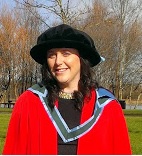 Michelle worked on the comprehensive analysis of polymorphs using spectroscopic techniques. She was a 2008 graduate of NUIG chemistry. Her project was funded under the Solid State Pharmaceutical Characterization Cluster (
Michelle worked on the comprehensive analysis of polymorphs using spectroscopic techniques. She was a 2008 graduate of NUIG chemistry. Her project was funded under the Solid State Pharmaceutical Characterization Cluster ( 

 Przemyslaw joined the laboratory in Sept. 2012. His PhD research focused on the use of Total Internal Reflection Fluorescence (TIRF) based methods for the analysis of protein-surface interactions. His thesis work also looked at the development of alignment tools for TIRF microscopy and the study of interesting fluorescent monolayers. He submitted his thesis in Sept. 2018 and successfully passed his viva voce examination on 29/11/2018.
Przemyslaw joined the laboratory in Sept. 2012. His PhD research focused on the use of Total Internal Reflection Fluorescence (TIRF) based methods for the analysis of protein-surface interactions. His thesis work also looked at the development of alignment tools for TIRF microscopy and the study of interesting fluorescent monolayers. He submitted his thesis in Sept. 2018 and successfully passed his viva voce examination on 29/11/2018. Yannick was awarded an IRC PhD scholarship to research the application of multi-dimensional fluorescence anisotropy for studying and quantifying protein aggregation.
Yannick was awarded an IRC PhD scholarship to research the application of multi-dimensional fluorescence anisotropy for studying and quantifying protein aggregation.  Marina undertook research into the application of fluorescence multi-dimensional fluorescence anisotropy for the identification and characterization of IgG type proteins in liquid solutions. She has a BSc (Pharmacy, 2011-16) from the
Marina undertook research into the application of fluorescence multi-dimensional fluorescence anisotropy for the identification and characterization of IgG type proteins in liquid solutions. She has a BSc (Pharmacy, 2011-16) from the 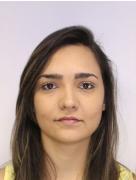 For her PhD Ana Luiza undertook research into the application of multi-dimensional fluorescence anisotropy for the identification and characterization of Antibody-Drug Conjugates (ADCs) and PEGylation reactions. She submitted her thesis in Sept. 2020 and successfully defended her viva voce on the 22/10/2020.
For her PhD Ana Luiza undertook research into the application of multi-dimensional fluorescence anisotropy for the identification and characterization of Antibody-Drug Conjugates (ADCs) and PEGylation reactions. She submitted her thesis in Sept. 2020 and successfully defended her viva voce on the 22/10/2020. 
 Fiona iundertook research into understanding how the complex photophysics of multi-fluorophore proteins affects Anisotropy Resolved Multi-Dimensional Emission Spectroscopy (ARMES) measurements. This involves investigating how ARMES can be used to study FRET in proteins and characterize protein-liposome interactions. Fiona submitted her thesis in September 2021 and passed her viva in December 2021.
Fiona iundertook research into understanding how the complex photophysics of multi-fluorophore proteins affects Anisotropy Resolved Multi-Dimensional Emission Spectroscopy (ARMES) measurements. This involves investigating how ARMES can be used to study FRET in proteins and characterize protein-liposome interactions. Fiona submitted her thesis in September 2021 and passed her viva in December 2021.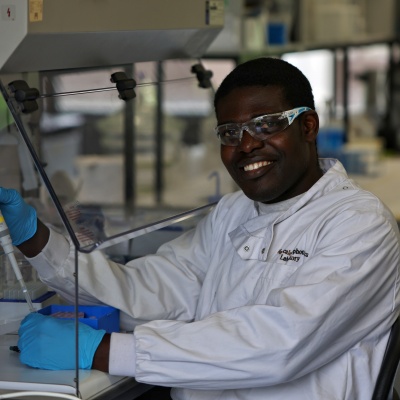 Bernard undertook research into monitoring complex bioprocesses using Anisotropy Resolved Multi-Dimensional Emission Spectroscopy (ARMES) measurements and chemometric data analysis. Bernard submitted his thesis in April 2022, passed his viva in May 2022, and graduated in November 2022. He his now working a lecturer in Chemistry at the
Bernard undertook research into monitoring complex bioprocesses using Anisotropy Resolved Multi-Dimensional Emission Spectroscopy (ARMES) measurements and chemometric data analysis. Bernard submitted his thesis in April 2022, passed his viva in May 2022, and graduated in November 2022. He his now working a lecturer in Chemistry at the 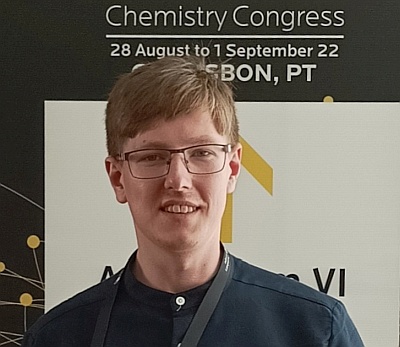 Shane
Shane Tomas Doyle (M.Sc. Biomedical Eng. Sci.) - Summer 2004.
Tomas Doyle (M.Sc. Biomedical Eng. Sci.) - Summer 2004. 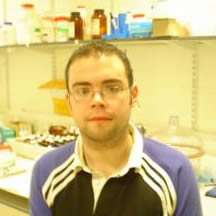 Cartha Donovan ( M.Sc. Biomedical Eng. Sci.) - Summer 2004.
Cartha Donovan ( M.Sc. Biomedical Eng. Sci.) - Summer 2004.  Sarah joined the group in June 2017 and worked initially on industrially funded analytics projects. She helped develop robust analytical methods for the analysis of various complex materials used in bio-pharma sector. She then worked on the PAT4Nano project helping develop Raman based methods for the analysis of nanosuspensions.
Sarah joined the group in June 2017 and worked initially on industrially funded analytics projects. She helped develop robust analytical methods for the analysis of various complex materials used in bio-pharma sector. She then worked on the PAT4Nano project helping develop Raman based methods for the analysis of nanosuspensions. Saioa worked on the AA-BTM project investigating how to best analyse ARMES data using chemometric methods.
Saioa worked on the AA-BTM project investigating how to best analyse ARMES data using chemometric methods. 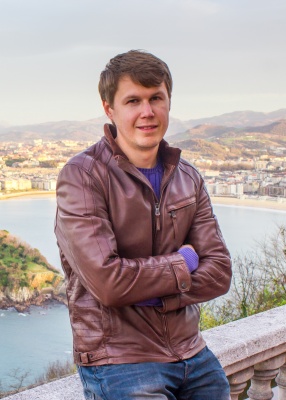
 Ya-juan joined the group in November 2016 and worked on developing chemometric and analytical methods for the analysis of solid-state materials as part of the
Ya-juan joined the group in November 2016 and worked on developing chemometric and analytical methods for the analysis of solid-state materials as part of the  Kevin was first an
Kevin was first an  He joined the group in June 2006 and helped develop novel chemometric based methods of analysis for complex materials. He first worked on the
He joined the group in June 2006 and helped develop novel chemometric based methods of analysis for complex materials. He first worked on the  Valerie worked on an industry funded research project, looking at components used in cell culture manufacture.
Valerie worked on an industry funded research project, looking at components used in cell culture manufacture.  Deniso worked on developing fluorescence based methods for the quantitative characterization of protein-surface interactions.
Deniso worked on developing fluorescence based methods for the quantitative characterization of protein-surface interactions.  Worked on the development of a fluorescence-based method for the analysis of single hydrocarbon-bearing fluid inclusions to enhance petroleum exploration. The primary goal of the research is concerned with developing quantitative fluorescence-based techniques for the non-contact, non-destructive analysis of fluid inclusions. Nigel received a B.Sc. from the University of Natal , a B.Sc.(Hons) from
Worked on the development of a fluorescence-based method for the analysis of single hydrocarbon-bearing fluid inclusions to enhance petroleum exploration. The primary goal of the research is concerned with developing quantitative fluorescence-based techniques for the non-contact, non-destructive analysis of fluid inclusions. Nigel received a B.Sc. from the University of Natal , a B.Sc.(Hons) from  Graduated from the University of Sri Jayewardenepura , Colombo , Sri lanka with a Chemistry honors degree in 2001. He was awarded a Royal society of Chemistry studentship to continue his research towards a PhD on Raman spectroscopy/ Surface enhanced Raman spectroscopy with Dr Steven Bell (Director IMM) in
Graduated from the University of Sri Jayewardenepura , Colombo , Sri lanka with a Chemistry honors degree in 2001. He was awarded a Royal society of Chemistry studentship to continue his research towards a PhD on Raman spectroscopy/ Surface enhanced Raman spectroscopy with Dr Steven Bell (Director IMM) in  Worked on the CBAS project and his main research involved the FT-IR and NIR analysis of complex materials. He started his studies of Bioprocess Engineering - Technology of Renewable Resources in Sept. 1999 at the University of Applied Sciences and Arts Hanover, Germany, and finished those with a diploma thesis in 2003. Within his first internship (2001) at the
Worked on the CBAS project and his main research involved the FT-IR and NIR analysis of complex materials. He started his studies of Bioprocess Engineering - Technology of Renewable Resources in Sept. 1999 at the University of Applied Sciences and Arts Hanover, Germany, and finished those with a diploma thesis in 2003. Within his first internship (2001) at the  Chemometric method development, CBAS. He joined the group in May 2006 from the
Chemometric method development, CBAS. He joined the group in May 2006 from the  Chemometrics and Raman spectroscopy, Hazard-IQ.
Chemometrics and Raman spectroscopy, Hazard-IQ.  Bryan worked on the spectroscopic analysis of complex biological materials used in biopharmaceutical manufacturing.
Bryan worked on the spectroscopic analysis of complex biological materials used in biopharmaceutical manufacturing. 






